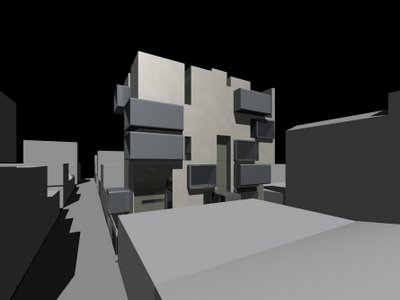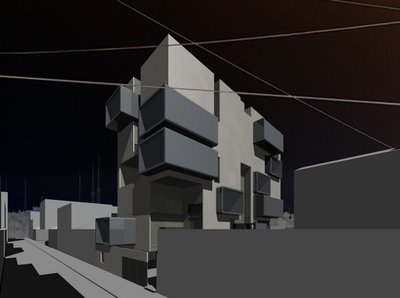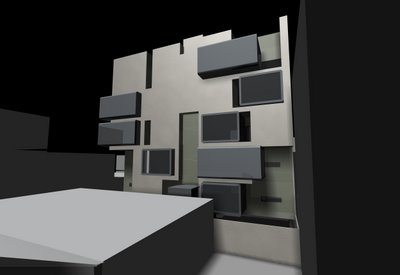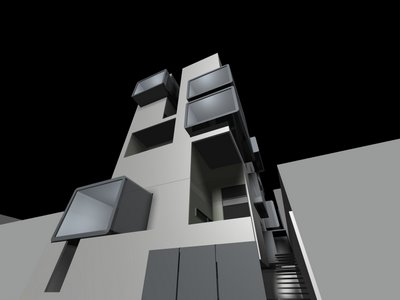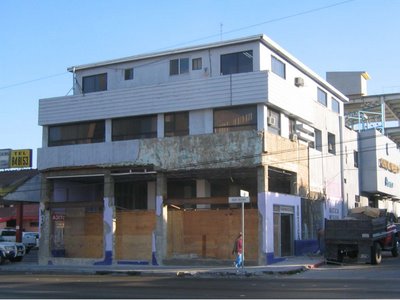Otra/Another 2006
Inhabiting the Border / Habitando la Frontera
Sinopsis:
OTRA/ANOTHER en su tercera versión, analiza la discordancia causada por cambios globales, económicos y políticos entre la ciudad (el desarrollo urbano) y la vivienda. Las ciudades de Latinoamérica han sufrido los estragos de la teoría funcionalista moderna, enfocada en el diseño para el individuo sin desarrollar ideas de carácter social para la ciudadanía en general. A causa del crecimiento acelerado de Tijuana se han creado mecanismos que intentan abatir el problema de los asentamientos irregulares para lograr una consolidación urbana, primero por programas de regularización y después por contrataciones con empresas desarrolladoras para la construcción de vivienda de interés social.[1] En los últimos quince años el cambio de la vivienda popular de la auto-construcción hacia la vivienda en serie por desarrolladores locales y foráneos ha creado en Tijuana, proyectos habitacionales encapsulados y regidos por temáticas de seguridad a causa de los altos índices de criminalidad y por practicas de mercado que reemplazan la oferta de tipologías ante la alternativa de créditos hipotecarios.
El proyecto OTRA/ANOTHER presentará las perspectivas locales sobre el desarrollo urbano en torno a la vivienda de interés social y de clase media. No limitado a la ciudad de Tijuana, el evento concentra arquitectos y académicos de diferentes ciudades en Estados Unidos y México, con la finalidad de mostrar las ideologías académicas y prácticas en relación al tema. Dentro las universidades locales el tema de la vivienda se ha convertido en una simple cuestión de organización de espacio y técnicas de construcción, sin enfrentar el reto de su desarrollo en la ciudad y su impacto social y urbano dentro del espacio político. Sin embargo, OTRA/ANOTHER no intenta presentar modelos arquitectónicos alternativos, el propósito es más bien, analizar el tema desde su carácter social, el impacto de la homogeneización de los desarrollos residenciales e ilustrar las políticas locales (como también las de otras ciudades), que dan forma a los proyectos y programas de vivienda a fines del siglo XX y principios del XXI.
Los temas a tratar en el ciclo de conferencias, así como en la exhibición, se desarrollarán con base al concepto general de OTRA/ANOTHER, dejando abierta la interpretación a cada presentador y participante del evento. Los diferentes temas son (aunque sin limitarse a estos): las perspectivas y programas gubernamentales de vivienda en Estados Unidos y México; los arquetipos de la vivienda suburbana y su impacto en el desarrollo de periferias, tales como Inland Empire en el sur de California; el desarrollo histórico de los asentamientos irregulares en la ciudad de Tijuana y las nuevas tendencias y responsabilidades del arquitecto como desarrollador privado.
La exposición del evento se llevará al cabo en la galería del Instituto de Cultura de Baja California, donde se presentarán proyectos teóricos y académicos así como concursos y propuestas prácticas.
Por medio de este ciclo de conferencias y la exposición de trabajos, en el lapso de un mes, OTRA/ANOTHER en su tercera edición, mostrará a la ciudadanía la diversidad y complejidad del desarrollo de la vivienda y su impacto en el desarrollo urbano de la ciudad; pretendiendo concienciar a profesionistas, estudiantes y desarrolladores, del impacto que tiene la vivienda dentro del espacio público y sus diferentes niveles de interacción social, política y ambiental.
OTRA/ANOTHER, regresa a la ciudad ofreciendo como provocación, un catalizador de la expresión arquitectónica, acelerando el flujo de ideas y la colaboración interdisciplinaria; creando con ello, una energía cultural crítica en Tijuana.
Rene Peralta
[1] Alegría, Tito, Gerardo Ordóñez “Legalizando La Ciudad Asentamientos Informales y Procesos de Regularización en Tijuana ” El Colegio de La Frontera Norte, 2005
Para mas informacion ver el blog de Otra – www.otranother.blogspot.com


